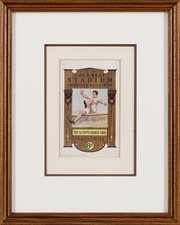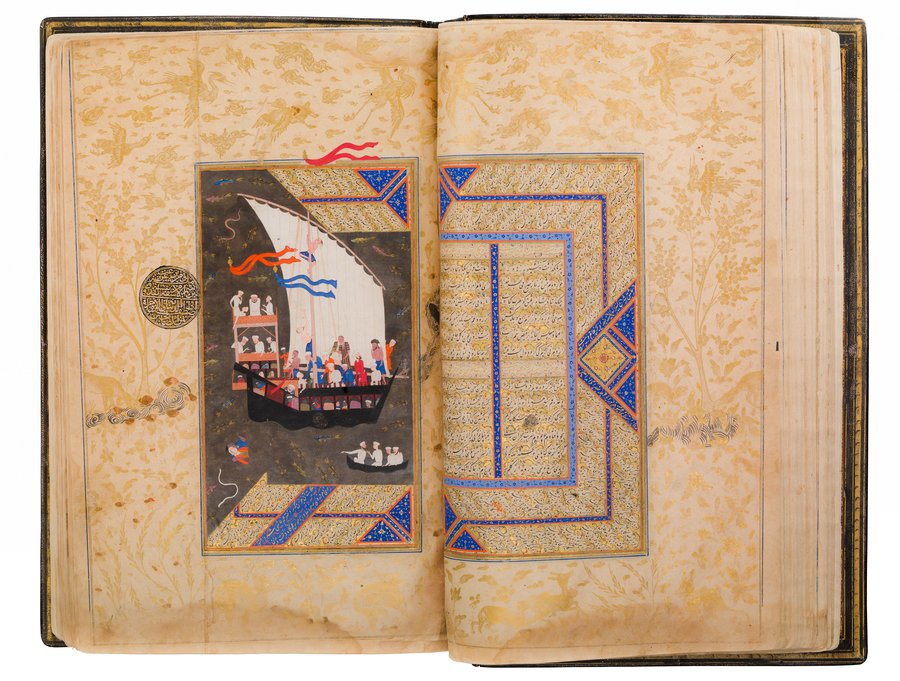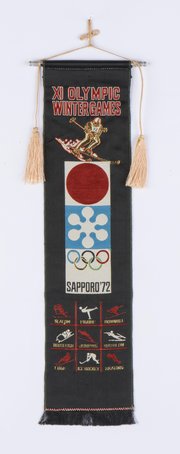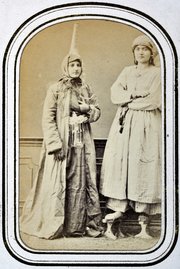
Diwan (Collected Poems) of Jami
Museum of Islamic Art
- Title:
- Diwan (Collected Poems) of Jami
- Author:
- Nur al-Din 'Abd al-Rahman Jami
- Original Author:
- Nur al-Din 'Abd al-Rahman Jami
- Copyist:
- M. Al-Katib Al-Shirazi, Shah Muhammad A. Al-Shirazi
- Production place:
- Iran
- Date:
- 1563 - 1564
- Period:
- Safavid
- Title:
- Diwan (Collected Poems) of Jami
- Author:
- Nur al-Din 'Abd al-Rahman Jami
- Original Author:
- Nur al-Din 'Abd al-Rahman Jami
- Copyist:
- M. Al-Katib Al-Shirazi, Shah Muhammad A. Al-Shirazi
- Production place:
- Iran
- Date:
- 1563 - 1564
- Period:
- Safavid
- Material:
- Paper, Ink, Gouache, Gold, Leather
- Technique:
- Bookbinding, Calligraphy, Illustration, Illumination
- Dimensions:
- 42.5 × 27 × 7
Coveted possessions for Muslim rulers across the Islamic world, illustrated manuscripts were highly mobile objects, exchanged and transferred as gifts or war booties. This fine copy of the Divan-e Jami shared the destiny of many other luxurious books: probably made in Shiraz for an affluent patron, it later entered the royal library of Ibrahim ʿAdil Shah II (r. 988-1036 AH/1580-1627 CE), the sixth ruler of Bijapur (nowadays Karnataka, India), as the numerous impressions of Ibrahim’s circular Qur’anic seal on the manuscript show.
The Divan-e Jami is a famous collection of mystical and theological works composed by the late Timurid poet and Naqshbandi Sufi scholar Jami during his lifetime. The opening bifolios of this manuscript show two pairs of richly illuminated frontispieces: the polychrome shamsas list the titles of Jami’s poetic works in the manuscript in white ink on gold, while the almond-shaped lapis-lazuli centrepieces contain a short eulogy of the author in gold script. Nineteenth illustrations with golden marginal decorations complete this manuscript. The paintings are remarkable examples of the Shirazi painting tradition under the first Safavid rulers and account for the creative engagement of the artists with Jami’s poetry and its visual interpretation as they feature both popular subjects and less illustrated scenes.
The manuscript probably reached Ibrahim’s court with the wave of illustrious Iranian artists and intellectuals that migrated to the subcontinent between the 10th and the 11th century AH (last quarter of the 16th century CE). It thus stands as a fitting example of the intense cultural and diplomatic exchanges between the Bijapur court and Safavid Iran during the reign of Ibrahim ʿAdil Shah II and of the reach of Perso-Islamic ideals well into the subcontinent.



